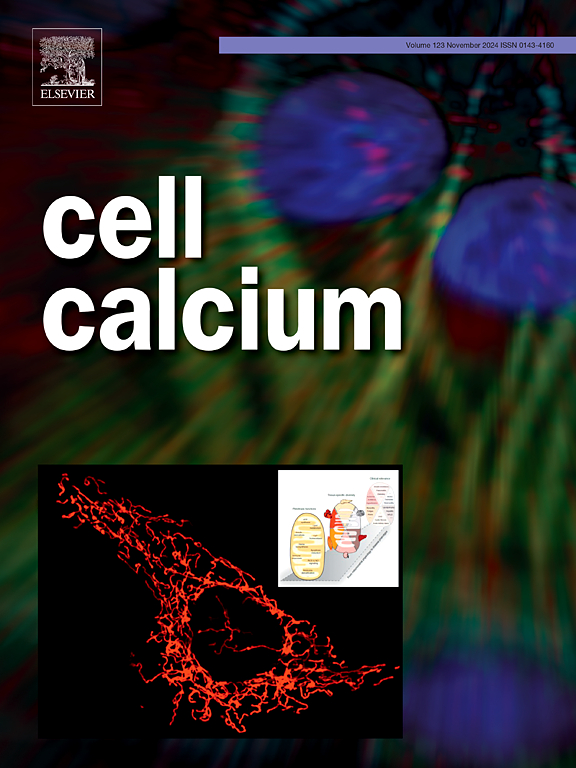Campari2基因组对稳态钙活性的研究表明TIM1是T细胞功能的负调节因子
IF 4
2区 生物学
Q2 CELL BIOLOGY
引用次数: 0
摘要
钙信号调节关键的细胞功能,但许多编码Ca2+处理蛋白的基因仍然未知,因为它们的鉴定依赖于低通量的单细胞方法。在这里,我们描述了一种使用CaMPARI2,流式细胞术和汇集基因组询问来测量Ca2+活性的方法。CAMPARI2筛选(CaMP-Screen)鉴定了稳态Ca2+活性的增强子和抑制剂,突出了存储操作的Ca2+进入(SOCE)和脂质信号通路的主要作用。降低基础Ca2+活性的基因与Prader Willy综合征、T细胞功能障碍和耳聋有关。沉默编码T细胞跨膜免疫球蛋白和粘蛋白(TIM1)的HAVCR1基因,可以增强T细胞中的Ca2+信号,并在静止状态下促进信号传导,而在TCR参与后则没有。我们的研究结果建立了CaMP-Screen作为低振幅Ca2+信号的有效检测器,并鉴定了与调节Ca2+稳态的病理相关的新基因,报告TIM1是驱动T细胞功能的Ca2+信号的负调节因子。本文章由计算机程序翻译,如有差异,请以英文原文为准。

Campari2 genomic interrogation of homeostatic calcium activity identifies TIM1 as a negative regulator of T cell function
Calcium signals regulate crucial cellular functions yet many genes coding for Ca2+handling proteins remain unknown as their identification relies on low-throughput single-cell approaches. Here we describe a method to measure Ca2+ activity using CaMPARI2, flow cytometry and pooled genome interrogation. CAMPARI2 screen (CaMP-Screen) identified enhancers and inhibitors of homeostatic Ca2+ activity, highlighting a predominant role for store-operated Ca2+ entry (SOCE) and lipid signalling pathways. Genes reducing basal Ca2+ activity were linked to Prader Willy syndrome, T cell dysfunction, and deafness. Silencing of HAVCR1 gene, coding for T cell transmembrane immunoglobulin and mucin (TIM1), enhanced Ca2+ signals in T cells and promoted signaling under resting but not after TCR engagement. Our findings establish CaMP-Screen as an efficient detector of low-amplitude Ca2+ signals and identify new genes associated to pathologies that regulate Ca2+ homeostasis, reporting TIM1 as a negative regulator of Ca2+ signals driving T cell function.
求助全文
通过发布文献求助,成功后即可免费获取论文全文。
去求助
来源期刊

Cell calcium
生物-细胞生物学
CiteScore
8.70
自引率
5.00%
发文量
115
审稿时长
35 days
期刊介绍:
Cell Calcium covers the field of calcium metabolism and signalling in living systems, from aspects including inorganic chemistry, physiology, molecular biology and pathology. Topic themes include:
Roles of calcium in regulating cellular events such as apoptosis, necrosis and organelle remodelling
Influence of calcium regulation in affecting health and disease outcomes
 求助内容:
求助内容: 应助结果提醒方式:
应助结果提醒方式:


